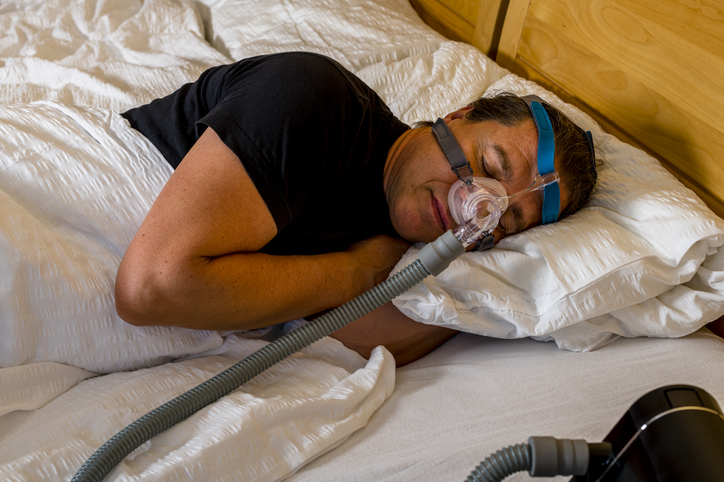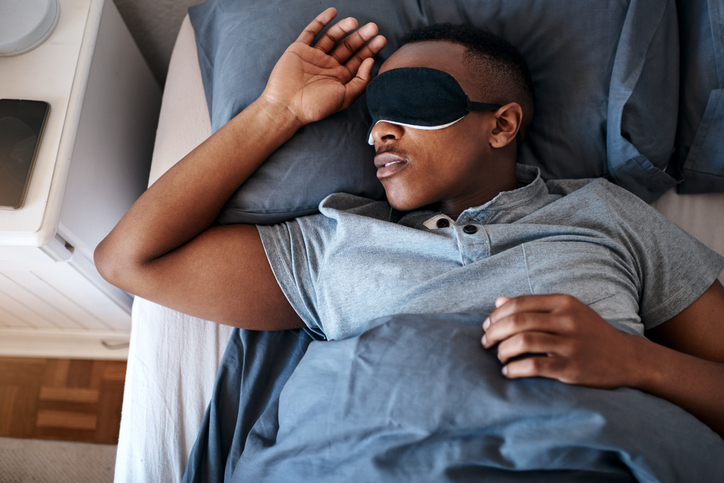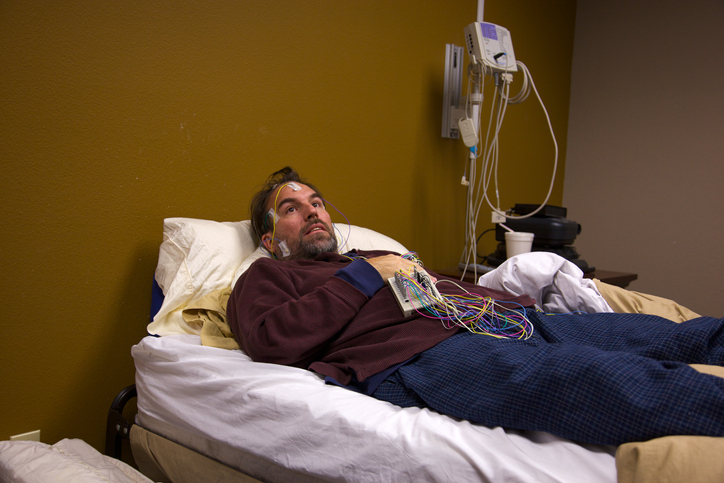Living with Chronic Pain
Diagnosing Sleep Apnea

What is sleep apnea?
Sleep apnea is a sleep disorder in which breathing repeatedly stops for brief periods (typically around 10 seconds) while sleeping. Depending on the severity of the condition, this can happen from five to 100 times per hour. As a result, the body and brain do not get adequate oxygen.
Symptoms of sleep apnea include loud snoring, gasping for air during sleep, excessive daytime sleepiness, dry mouth upon waking, morning headaches, irritability, difficulty staying asleep, and difficulty with concentration while awake. Over time, untreated sleep apnea can lead to serious health conditions, such as high blood pressure, stroke, heart attack, or heart failure.
Types of sleep apnea
There are three types of sleep apnea: obstructive sleep apnea, central sleep apnea,and treatment-emergent sleep apnea.
- Obstructive sleep apnea occurs as a result of the throat muscles relaxing and partially or completely blocking airflow. It is the most common type of sleep apnea.
- Central sleep apnea occurs when the brain doesn’t send the proper signals to the muscles that control breathing.
- Treatment-emergent sleep apnea, or complex sleep apnea, occurs when both obstructive and central sleep apnea are present. It typically develops when starting continuous positive airway pressure (CPAP) treatment.
Diagnosing sleep apnea
The first steps in the diagnostic process include a physical exam and medical history. A referral to a sleep clinic for a sleep study (polysomnography) is typically ordered if sleep apnea is suspected.
Nocturnal polysomnography
A nocturnal polysomnography requires an overnight stay at a sleep center. Specialized equipment is attached to the body to monitor heart, lung, and brain activity. Breathing patterns, leg and arm movements, and blood oxygen levels are recorded throughout the night. Mild sleep apnea is diagnosed if 5 to 14 “apnea events” occur in an hour’s time, moderate sleep apnea is diagnosed if 15 to 29 occur per hour, and severe sleep apnea involves 30 or more events per hour.
Home sleep tests
Home sleep tests can also help in the diagnosis of sleep apnea. These tests can detect breathing issues and measure heart rate, blood oxygen levels, and airflow. If central sleep apnea is suspected, it is likely that a polysomnography at a sleep center will be recommended. It is common for home sleep tests to return false negatives, so a polysomnography may be recommended even if home test results are within the standard range.
Blood tests
Certain blood tests can be ordered to check hormone levels. Test results can help determine if an endocrine disorder may be the cause of symptoms.
Pelvic ultrasound
A pelvic ultrasound may be ordered to check the ovaries for cysts. This can help to rule out polycystic ovary syndrome as a potential cause.
Other specialists
Referrals to other specialists may be ordered to help rule out other causes of sleep apnea. For example, an ear, nose, and throat specialist can perform tests to identify any blockages that may be the cause of obstructive sleep apnea, and a cardiologist or neurologist can help detect potential causes of central sleep apnea.


















